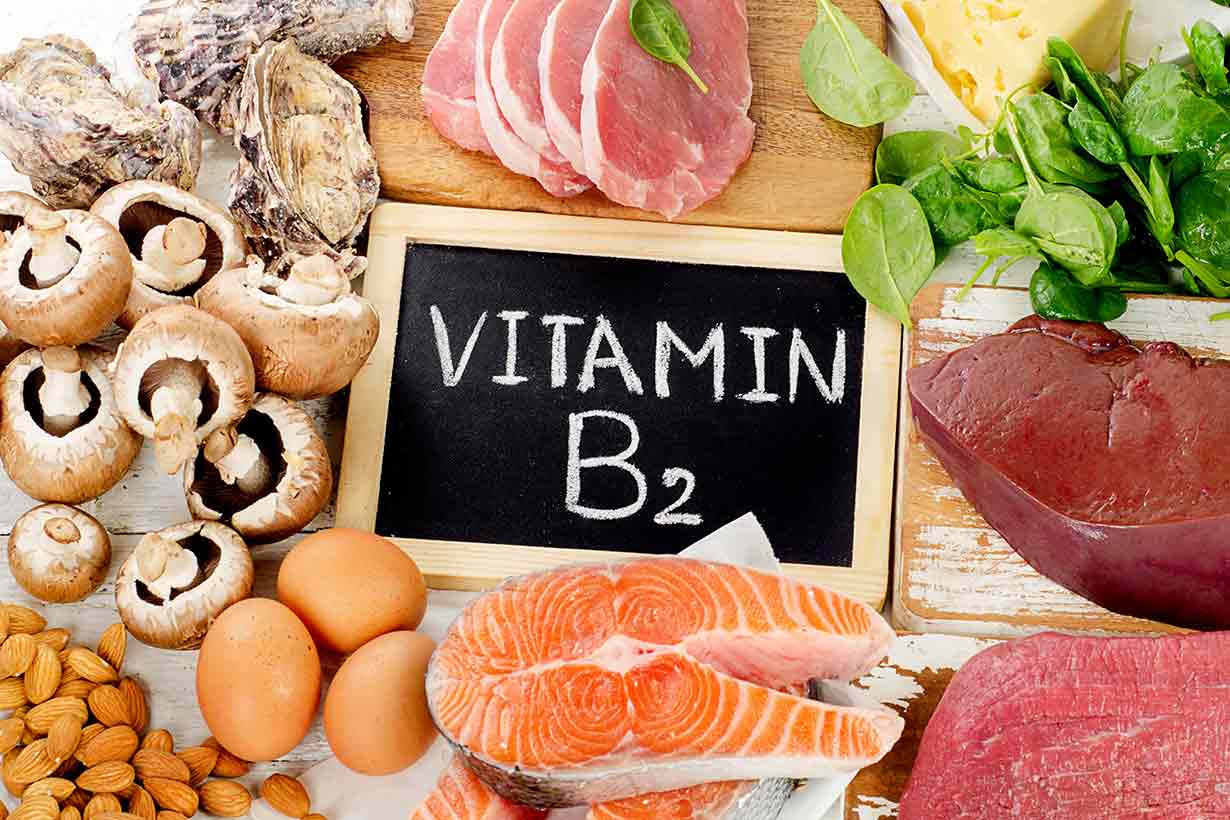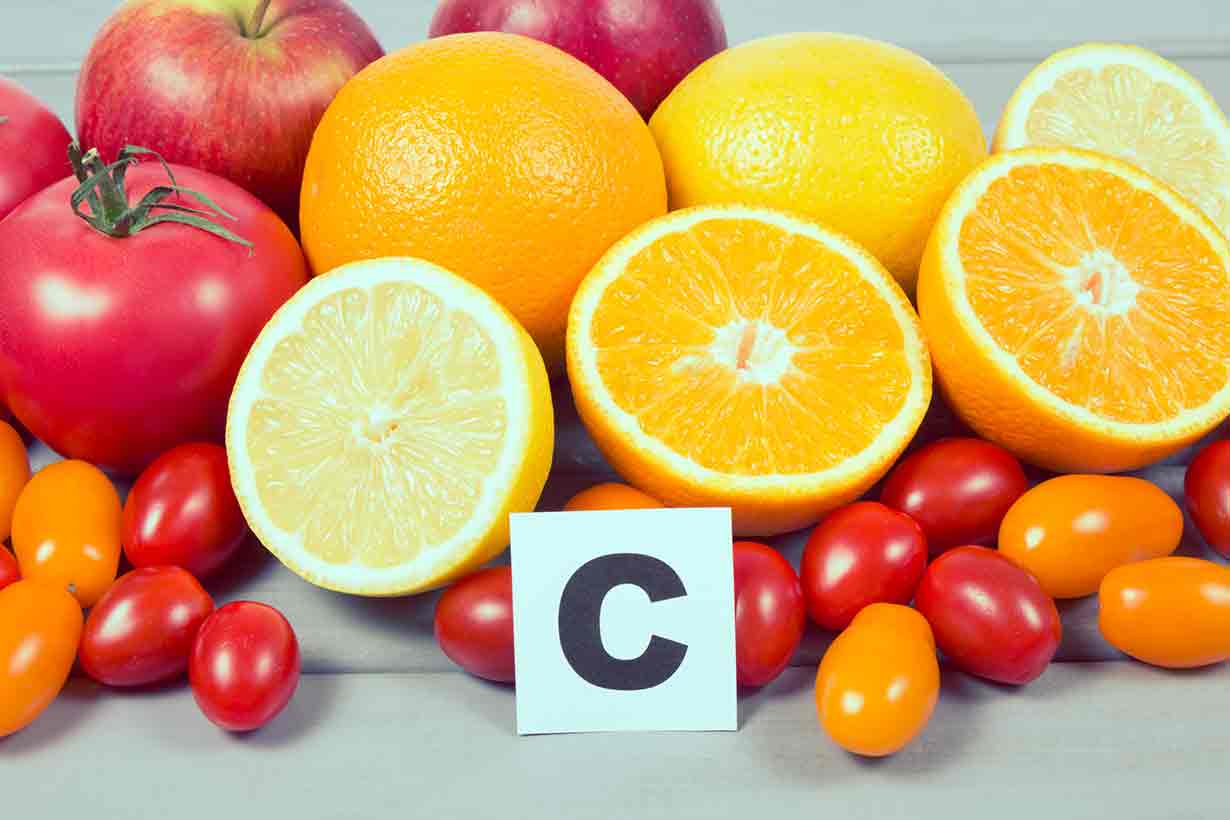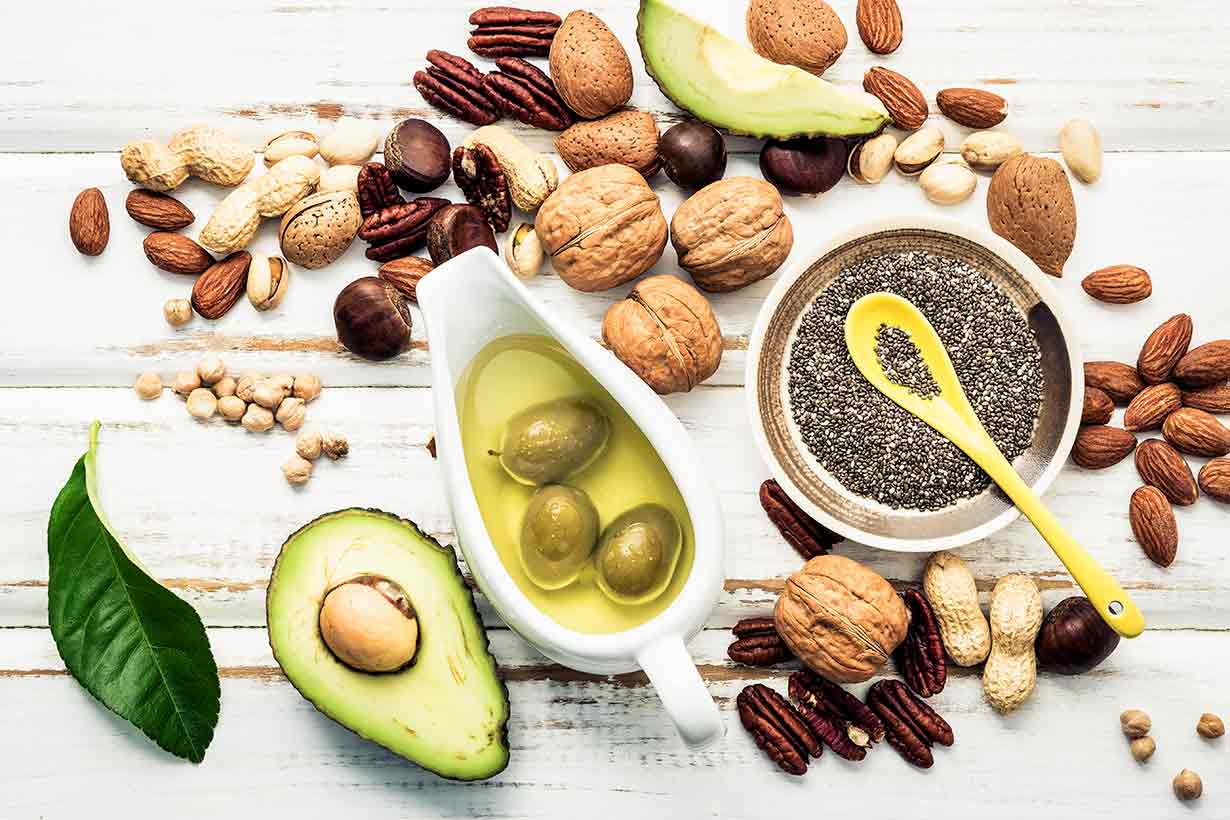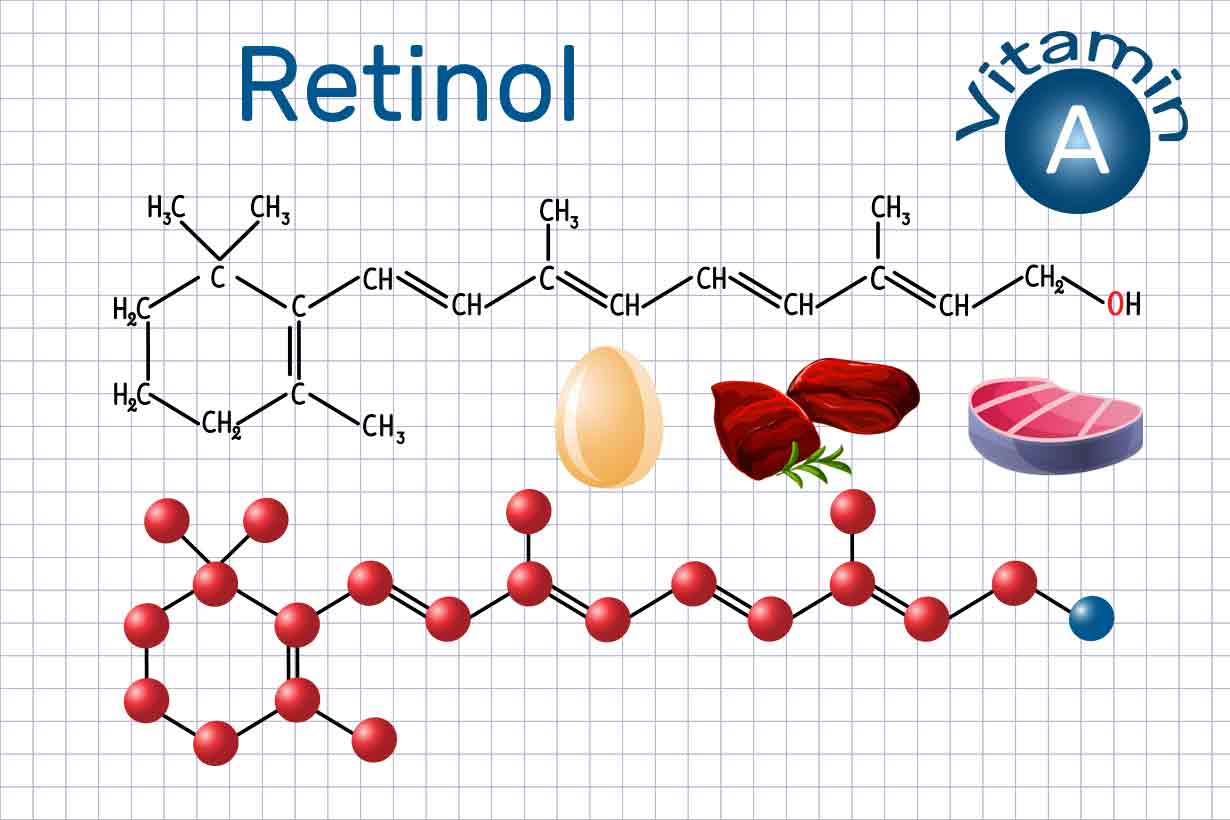Riboflavin, also known as vitamin B2, is one of the eight B vitamins, and it is an essential vitamin.
This article provides a list of foods highest in riboflavin per serving and per 100 grams.
For reference, the current daily value for riboflavin is 1.3 mg for adults and children over the age of four (1).

1) Liver
Liver is an excellent source of B vitamins, and it is very rich in riboflavin.
All varieties of liver offer a significant amount of the vitamin, but lamb liver contains particularly high amounts.
Per 4 oz serving, lamb liver offers 315% of the recommended daily value for riboflavin (2).
Liver is also high in vitamin B12, biotin, and other B vitamins.
| Lamb Liver | Per 4 oz (113g) Serving | Per 100 Grams |
|---|---|---|
| Amount of riboflavin | 4.1 mg | 3.63 mg |
| % Daily value | 315% DV | 279% DV |
2) Soybeans
Soybeans are a relatively nutritious type of legume that provides a wide range of vitamins and minerals.
Among these nutrients, soybeans are a good source of riboflavin. Per 1/2 cup (raw weight) serving, they offer 62% of the daily value for the vitamin (3).
Soybeans are also a good source of fiber and other B vitamins, such as folate.
| Soybeans | Per 1/2 Cup (93g) Serving | Per 100 Grams |
|---|---|---|
| Amount of riboflavin | 0.81 mg | 0.87 mg |
| % Daily value | 62% DV | 67% DV |
3) Tempeh
Staying with soy-based foods, tempeh is another rich source of riboflavin.
Tempeh is a type of fermented soy product from Indonesia. It is an excellent plant-based source of protein, fiber, and several essential nutrients.
Per cup serving, tempeh offers 46% of the daily value for riboflavin (4).
| Tempeh | Per Cup (166g) Serving | Per 100 Grams |
|---|---|---|
| Amount of riboflavin | 0.594 mg | 0.358 mg |
| % Daily value | 46% DV | 28% DV |
4) Eggs
Eggs are sometimes referred to as ‘nature’s multivitamin’ because they contain so many different nutrients.
In reality, they only offer low amounts of some of these nutrients, but very high amounts of others.
Regarding their riboflavin content, eggs are a significant source, and three large eggs provide 49% of the daily value (5).
| Eggs | Per 3-Egg Serving | Per 100 Grams |
|---|---|---|
| Amount of riboflavin | 0.633 mg | 0.419 mg |
| % Daily value | 49% DV | 32% DV |
5) Fish Eggs (Roe)
While fish eggs are relatively uncommon in most people’s diets, they offer a lot of nutritional value.
For example, salmon roe offers large amounts of choline, omega-3, protein, and a wide variety of vitamins and minerals.
According to USDA data, just an ounce serving of fish eggs offers 16% of the daily value of riboflavin (6).
| Fish Eggs | Per oz (28g) Serving | Per 100 Grams |
|---|---|---|
| Amount of riboflavin | 0.21 mg | 0.74 mg |
| % Daily value | 16% DV | 57% DV |
6) Atlantic Mackerel
Atlantic mackerel has several benefits compared to other fish. For one thing, the fish is very high in omega-3, and it also has one of the lowest mercury concentrations (7).
Mackerel offers a substantial serving of riboflavin, too, with a typical fillet providing 27% of the daily value (8).
This oily fish also provides good amounts of vitamin B6 and a wide range of other essential nutrients.
| Atlantic Mackerel | Per Fillet (112g) | Per 100 Grams |
|---|---|---|
| Amount of riboflavin | 0.349 mg | 0.312 mg |
| % Daily value | 27% DV | 24% DV |
7) Greek Yogurt
Greek yogurt is a thick, fermented dairy product with a delicious taste.
Nutritionally the yogurt is a good source of protein, calcium, phosphorus, and numerous B vitamins, including riboflavin.
Per cup serving, Greek yogurt offers 44% of the vitamin’s daily value (9).
| Greek yogurt | Per Cup (245g) | Per 100 Grams |
|---|---|---|
| Amount of riboflavin | 0.571 mg | 0.233 mg |
| % Daily value | 44% DV | 18% DV |
8) Beef Kidney
Beef kidney is a type of organ meat that is not as popular as it once was.
However, kidney is very nutritious, and it contains significant amounts of numerous essential nutrients.
In the case of riboflavin, a typical serving of beef kidney supplies multiples (247%) of the recommended daily value (10).
| Beef Kidney | Per 4 oz (113g) | Per 100 Grams |
|---|---|---|
| Amount of riboflavin | 3.21 mg | 2.84 mg |
| % Daily value | 247% DV | 218% DV |
9) White Button Mushrooms
Mushrooms are unique in that they are neither animal nor plant foods. In contrast, mushrooms are a class of food on their own: fungi.
White button mushrooms are one of the most common fungi in the Western world, and they are also reasonably nutritious.
These mushrooms offer B vitamins and a good range of minerals for very few calories.
Among the B vitamins, white button mushrooms provide 30% of the daily value for riboflavin per cup serving (11).
| White button mushrooms | Per Cup (96g) | Per 100 Grams |
|---|---|---|
| Amount of riboflavin | 0.386 mg | 0.402 mg |
| % Daily value | 30% DV | 31% DV |
10) Mussels
Mussels are a type of shellfish with a similar appearance to oysters and clams, and they are very nutrient-dense.
In addition to omega-3, protein, and various other nutrients, mussels offer a good amount of riboflavin.
Per cup serving, mussels provide nearly a quarter—24%—of the daily value (12).
| Mussels | Per Cup (150g) | Per 100 Grams |
|---|---|---|
| Amount of riboflavin | 0.315 mg | 0.21 mg |
| % Daily value | 24% DV | 16% DV |
11) Almonds
Almonds are one of the most nutritious nut varieties, and they offer a broad range of vitamins and minerals.
These nuts have a fairly good riboflavin content too, and a typical ounce serving provides 25% of the daily value (13).
| Almonds | Per oz (28g) | Per 100 Grams |
|---|---|---|
| Amount of riboflavin | 0.323 mg | 1.14 mg |
| % Daily value | 25% DV | 88% DV |
12) Squid
Squid is a type of seafood that enjoys popularity in Asia, Hawaii, and the Mediterranean region.
While some people don’t realize, squid is also a variety of shellfish, and it offers a lot of nutritional value.
Squid is high in riboflavin, and it provides 36% of the daily value for the vitamin (14).
| Squid | Per 4 oz (113g) Serving | Per 100 Grams |
|---|---|---|
| Amount of riboflavin | 0.468 mg | 0.412 mg |
| % Daily value | 36% DV | 32% DV |
13) Ground Pork
Like most varieties of meat, ground pork provides a good source of protein, B vitamins, and minerals.
Per 4 oz serving, ground pork offers 18% of the daily value for riboflavin (15).
| Ground pork | Per 4 oz (113g) Serving | Per 100 Grams |
|---|---|---|
| Amount of riboflavin | 0.266 mg | 0.235 mg |
| % Daily value | 20% DV | 18% DV |
14) Ground Lamb
Ground lamb is another meat option that provides large amounts of riboflavin, with a 4-oz serving offering 18% of the daily value (16).
| Ground lamb | Per 4 oz (113g) Serving | Per 100 Grams |
|---|---|---|
| Amount of riboflavin | 0.237 mg | 0.21 mg |
| % Daily value | 18% DV | 16% DV |
15) Feta Cheese
Feta is a type of fresh cheese usually made from sheep’s milk, and it originates in Greece.
On a nutritional basis, feta is an excellent source of protein, B vitamins, and a variety of essential minerals.
Feta has a high riboflavin content, with just an ounce serving providing 18% of the daily value (17).
| Feta Cheese | Per oz (28g) | Per 100 Grams |
|---|---|---|
| Amount of riboflavin | 0.237 mg | 0.844 mg |
| % Daily value | 18% DV | 65% DV |
16) Salmon
Salmon is one of the most popular types of fish in the world, whether cooked, served raw as sushi, or smoked.
This common fish is an excellent source of protein, omega-3, and a wide range of micronutrients.
Salmon is also one of the top sources of riboflavin; half a fillet of wild Atlantic salmon offers 58% of the daily value (18).
| Wild Atlantic Salmon | Per 1/2 Fillet (198g) | Per 100 Grams |
|---|---|---|
| Amount of riboflavin | 0.752 mg | 0.38 mg |
| % Daily value | 58% DV | 29% DV |
17) Spinach
Spinach is a nutritious leafy green that is among the most nutrient-dense of vegetables.
This popular food is the best vegetable source of riboflavin, too, with a 100-gram serving of raw spinach offering 15% of the daily value (19).
| Spinach | Per Cup (30g) | Per 100 Grams |
|---|---|---|
| Amount of riboflavin | 0.057 mg | 0.189 mg |
| % Daily value | 4% DV | 15% DV |
18) Beef Skirt Steak (Lean)
Beef is a good source of riboflavin, and because B vitamins are not stored in fat, lean meat offers the highest concentrations of the vitamin.
A 4 oz (113g) serving of lean skirt steak provides 27% of the daily value for riboflavin (20).
| Beef Skirt Steak | Per 4 oz (113g) | Per 100 Grams |
|---|---|---|
| Amount of riboflavin | 0.35 mg | 0.31 mg |
| % Daily value | 27% DV | 24% DV |
19) Dried Shiitake Mushrooms
All mushrooms are a good source of riboflavin, and this includes shiitake mushrooms.
However, due to the drying process concentrating their nutrients, dried shiitake mushrooms offer the most.
On this note, just four dried shiitake mushrooms provide 15% of the daily value for riboflavin (21).
| Dried Shiitake Mushrooms | Per 4 Mushrooms (15g) | Per 100 Grams |
|---|---|---|
| Amount of riboflavin | 0.19 mg | 1.27 mg |
| % Daily value | 15% DV | 98% DV |
20) Anchovies
Anchovies are small-sized fish that are available for sale in numerous forms: dried, fresh, and canned.
Despite their size, anchovies are packed with essential nutrients, and they provide a wealth of omega-3, protein, B vitamins, and minerals.
A small 45-gram can of anchovies provides 13% of the daily value for riboflavin (22).
| Canned Anchovies | Per 45g Can | Per 100 Grams |
|---|---|---|
| Amount of riboflavin | 0.163 mg | 0.363 mg |
| % Daily value | 13% DV | 28% DV |
Highest Sources of Riboflavin Per 100 Grams
For convenience, here is the overall ranking of these foods in order of their provision of riboflavin per 100 grams.
| Rank | Food | Riboflavin % Daily Value |
|---|---|---|
| 1. | Lamb liver | 279% DV |
| 2. | Beef kidney | 218% DV |
| 3. | Dried shiitake mushrooms | 98% DV |
| 4. | Almonds | 88% DV |
| 5. | Soybeans | 67% DV |
| 6. | Feta cheese | 65% DV |
| 7. | Fish eggs | 57% DV |
| 8. | Squid | 32% DV |
| 9. | Eggs | 32% DV |
| 10. | White button mushrooms | 31% DV |
| 11. | Wild Atlantic salmon | 29% DV |
| 12. | Tempeh | 28% DV |
| 13. | Anchovies | 28% DV |
| 14. | Atlantic mackerel | 24% DV |
| 15. | Beef skirt steak | 24% DV |
| 16. | Ground pork | 18% DV |
| 17. | Greek yogurt | 17% DV |
| 18. | Mussels | 16% DV |
| 19. | Ground lamb | 16% DV |
| 20. | Spinach | 15% DV |
Data Sources
The source of the data for nutrient provisions is the USDA’s FoodData Central database.
Daily values have been calculated using the USDA figures based upon the FDA’s current published daily values.








